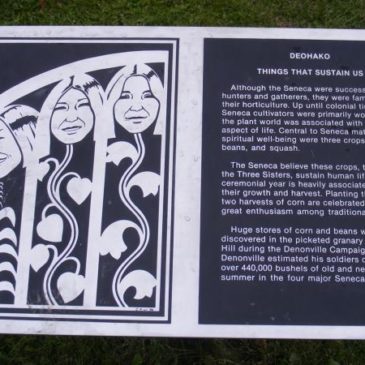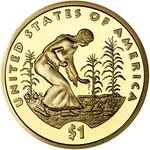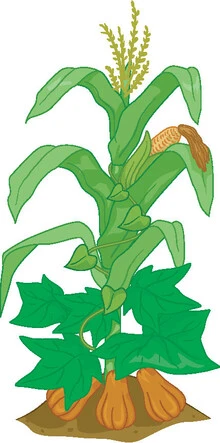Deoonaka and the indigenous origin of Enhanced Natural Burial

Deoohako: Things That Sustain Us by Don Morfe, October 15, 2009. Database Locator Identification Number: p262825. Courtesy of HMdb.org
People generally think of burial as something that happens at the end of a person’s life. In the case of a modern burial using embalming fluid and interment in a concrete vault, the goal of the undertaker is to arrest the body’s decay.
While Natural Burial is better for the environment in a “do no harm” sort of way, Herland Forest is committed to going the next step by initiating a process of environmental remediation. The goal is to use the resources locked up in someone’s body to spur the growth of a tree, a tree which will go on to remove tons of carbon dioxide from the atmosphere, provide food for bees and birds, and help the forest retain moisture.
When someone chooses to give their body back to nature, Herland does everything it can to ensure that the gift is maximally effective.

daffodils and a purple plum tree growing on an ENB-style grave
Interment in the Herland Forest is not the end of a person’s participation in the dance of life; rather, it’s the start of a new journey. Herland’s Enhanced Natural Burial (ENB) process transforms the elements in one’s body into the enriched organic soil that will support the growth of new life. The ENB process does its magic by enabling a tree to remove carbon dioxide from the atmosphere and sequester it underground.
I’m often asked where Herland came up with the concept of using natural burial to do forest remediation? Well, for centuries, the women of the Haudenosaunee used the Deoonaka process to feed the plants that nourished their farm land. We just adapted that process to nourish our forest land.
Deoonaka translates to “the things that sustain us.” I became familiar with this practice back in the early 1960s when I was living in Rhode Island and was invited to participate in harvesting a shad run. In the spring these small, salt-water fish run up New England creeks in the thousands to spawn. Folks would wade into the streams with bushel baskets and gather hundreds of the small, bony fish.

Sacajawea tending the Three Sisters
Modern folk considered the small fish (a variant of herring) to be too boney to be good eating, but the local tribe taught people how to use them to fertilize their gardens. The practice is to dig a hole and bury a fish in the hole. Dirt is then mounded up on over the fish to fertilize the soil. The last step involves planting “The Three Sisters” on top of the mound.

The Three Sisters
First, a few kernels of corn are planted on the top of the mound. When the kernels sprout, a trio of beans are planted. When the beans sprout, squash seeds are planted in a ring around the corn and beans.
The corn provides support for the beans as they climb up the corn stalk; The roots of the beans fix nitrogen from the air to support the squash; The broad leaf squash provide shade that helps keep down the weeds—and the body of the fish provides nutrients for all three. Perhaps most importantly, as those small fish bones break down, they provide the phosphorus that is a major limiting factor for plants.
I was familiar with how the Deoonaka process used nutrients from the bodies of fish to support the growth of the plants that nourish them. From there, it was a simple step to use human remains to help nourish the forest and support the growth of the flowers and trees that in turn support a growing population of bees and other pollinators.
